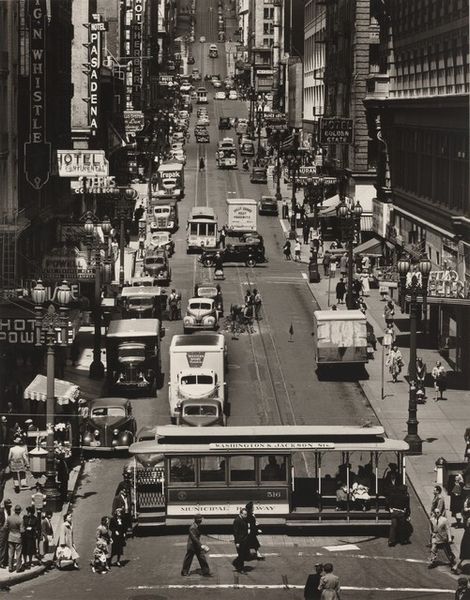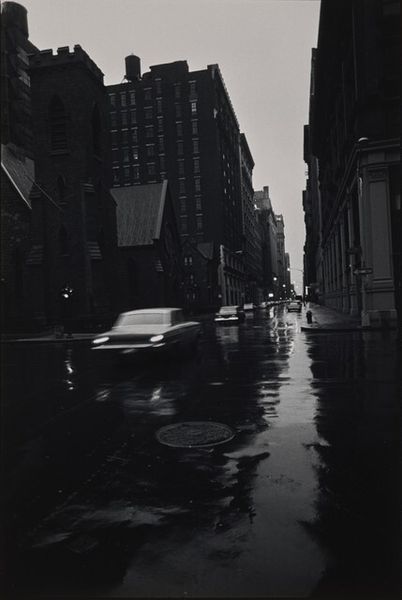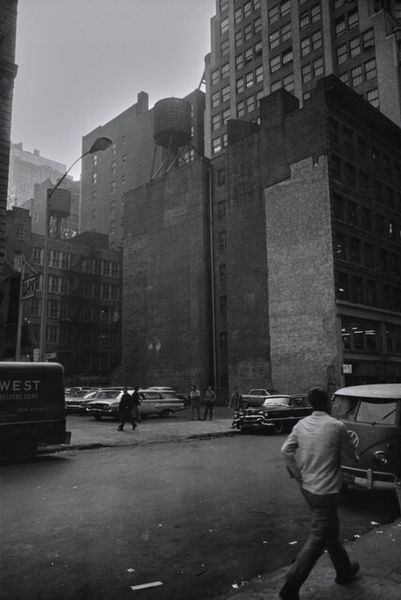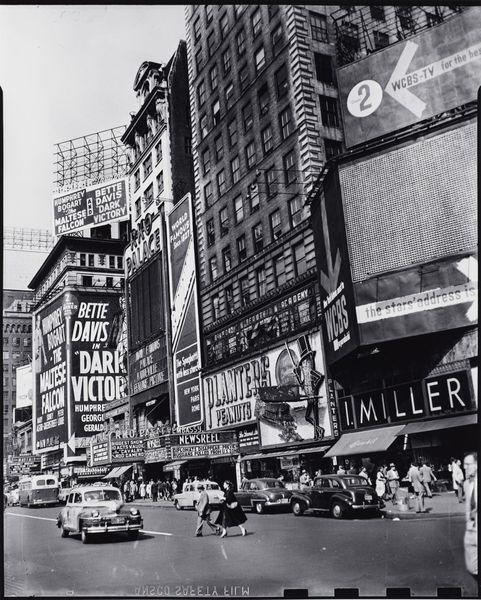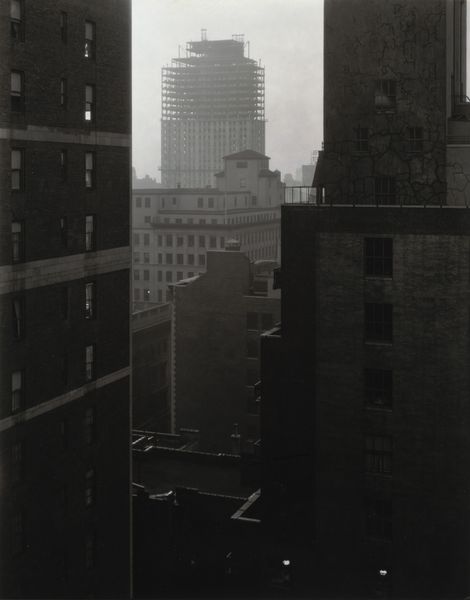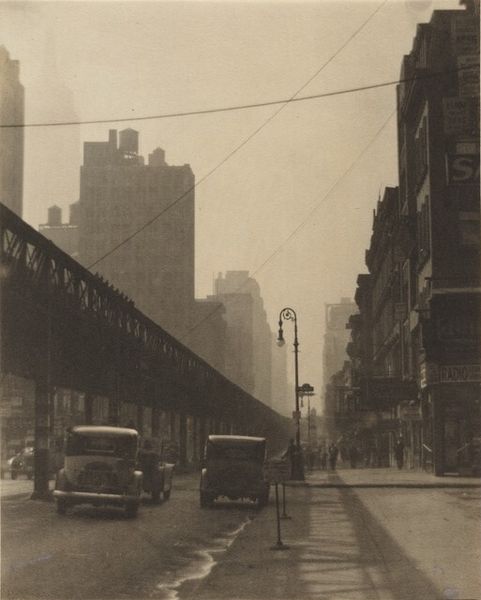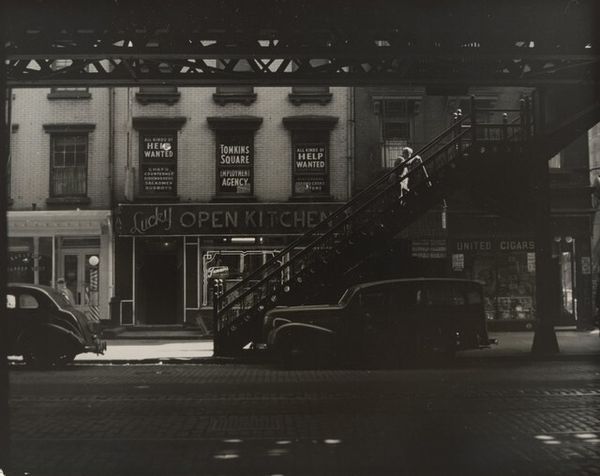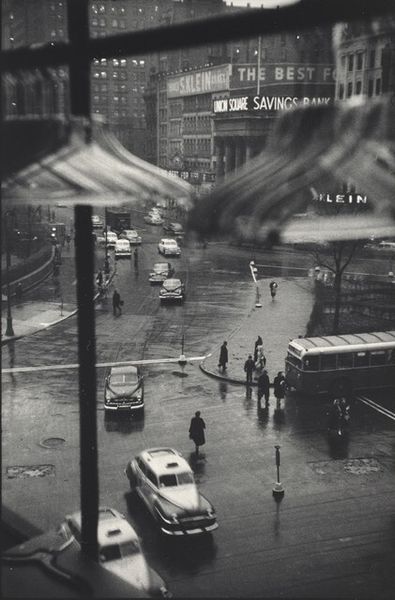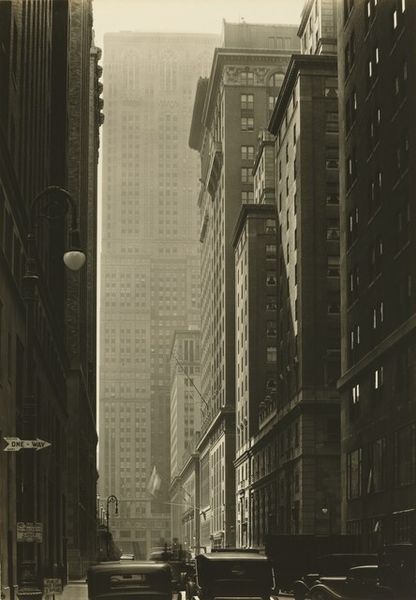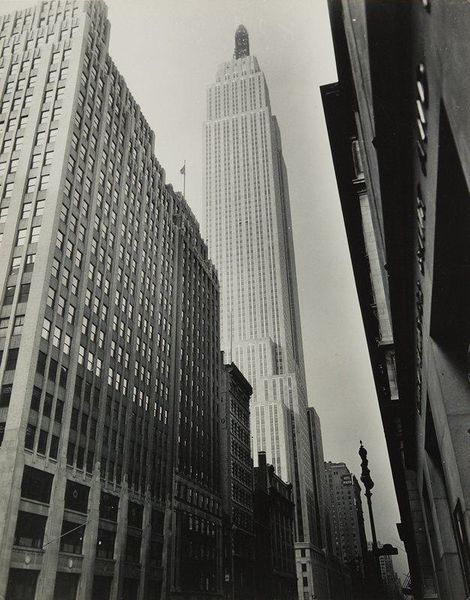
photography, gelatin-silver-print
#
street shot
#
street lighting
#
street-photography
#
photography
#
gelatin-silver-print
#
street photography
#
cityscape
#
modernism
#
realism
Dimensions: overall: 22.86 × 33.66 cm (9 × 13 1/4 in.)
Copyright: National Gallery of Art: CC0 1.0
Curator: There's something undeniably lonely about this street, isn't there? Editor: It has that Edward Hopper quality – early morning quiet. We're looking at David Vestal’s "6am, 6th Avenue & 23rd Street, New York," a gelatin silver print he captured in 1965. It speaks to the in-between moments, when a city breathes before it roars. Curator: Loneliness is a thread throughout cityscapes, it seems. That solitary figure crossing the street, dwarfed by the architecture, becomes almost a symbol. A visual marker, the transient human experience navigating an urban immensity. Editor: Exactly. Think about the power dynamics in play, even at that early hour. We've got the National City Bank, that towering hotel sign… institutions looming large. The street itself, 6th Avenue, it’s a corridor carved by capital and commerce. It presents itself through vertical dominance – literally establishing place in the culture as its street lighting and infrastructure reflect an early stage of modernity. Curator: The streetlights almost become a path or constellation, don't they? Little shining lights like distant stars—or perhaps guiding lights toward consumer destinations, as suggested. Do the signs serve as religious symbols for others on similar journeys? Editor: Possibly! This pre-dawn stillness amplifies everything. What Vestal's camera captures so perfectly is the performance of it all. This isn't just a quiet street; it is constructed, waiting, almost expectant. Even the blurry movement suggests both progress and labor – all existing in liminal space before the opening of business. Curator: There’s a strong graphic quality too, the stark contrast really accentuates these geometries and almost creates a flattening of space within the image's overall perspective, so perhaps that flattening is another form of comment about our world—with only the symbolic present, leaving us to look backward to meaning? Editor: Perhaps. It reminds me that spaces like this are inherently charged, socially constructed. These "empty" spaces of transition only momentarily lack bustle before the city reclaims its role and voice of production and consumption. Curator: I'm moved by that solitude – the feeling of potential and emptiness that these images represent even today. It becomes an eternal space where meanings emerge from silence, allowing those spaces of labor to regain voice beyond commercial influence. Editor: Ultimately, Vestal gives us a space to consider who shapes urban narratives, and who is erased or absorbed into the relentless engine of the metropolis. The everyday becomes a field ripe for observation, for both critique and contemplation.
Comments
No comments
Be the first to comment and join the conversation on the ultimate creative platform.
